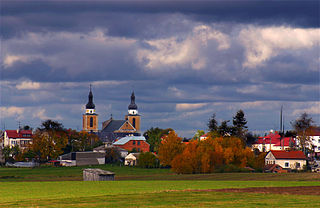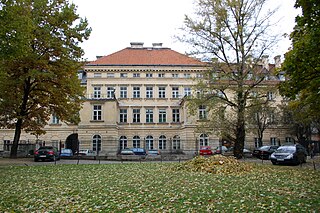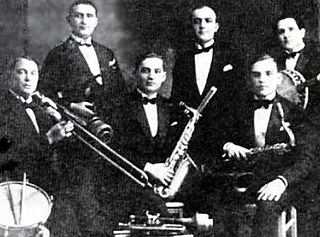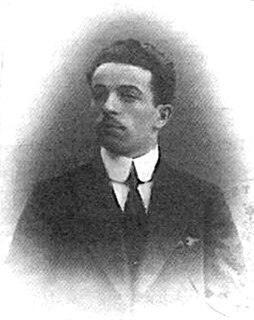
The Warsaw Ghetto was the largest of all the Jewish ghettos in German-occupied Europe during World War II. It was established by the German authorities in November 1940; within the new General Government territory of German-occupied Poland. There were over 400,000 Jews imprisoned there, at an area of 3.4 km2 (1.3 sq mi), with an average of 9.2 persons per room, barely subsisting on meager food rations. From the Warsaw Ghetto, Jews were deported to Nazi concentration camps and mass-killing centers. In the summer of 1942 at least 254,000 Ghetto residents were sent to the Treblinka extermination camp during Großaktion Warschau under the guise of "resettlement in the East" over the course of the summer. The ghetto was demolished by the Germans in May 1943 after the Warsaw Ghetto Uprisings which had temporarily halted the deportations. The total death toll among the Jewish inhabitants of the Ghetto is estimated to be at least 300,000 killed by bullet or gas, combined with 92,000 victims of rampant hunger and hunger-related diseases, the Warsaw Ghetto Uprising, and the casualties of the final destruction of the Ghetto.

The Pianist is a memoir by the Polish-Jewish pianist and composer Władysław Szpilman in which he describes his life in Warsaw in occupied Poland during World War II. After being forced with his family to live in the Warsaw ghetto, Szpilman manages to avoid deportation to the Treblinka extermination camp, and from his hiding places around the city witnesses the Warsaw ghetto uprising in 1943 and the Warsaw uprising the following year. He survives in the ruined city with the help of friends and strangers, including Wilm Hosenfeld, a German army captain who admires his piano playing.

The Jewish Combat Organization was a World War II resistance movement in occupied Poland, which was instrumental in engineering the Warsaw Ghetto Uprising. ŻOB took part in a number of other resistance activities as well.

The Warsaw Ghetto Uprising was the 1943 act of Jewish resistance in the Warsaw Ghetto in German-occupied Poland during World War II to oppose Nazi Germany's final effort to transport the remaining ghetto population to Majdanek and Treblinka concentration camps. After the Grossaktion Warsaw of summer 1942, in which more than a quarter of a million Jews were deported from the ghetto to Treblinka and murdered, the remaining Jews began to build bunkers and smuggle weapons and explosives into the ghetto. The left-wing Jewish Combat Organization (ŻOB) and right-wing Jewish Military Union (ŻZW) formed and began to train. A small resistance effort to another roundup in January 1943 was partially successful and spurred the Polish groups to support the Jews in earnest.

Umschlagplatz is a common, neutral, technical term denoting a place where all goods for rail transport are handled, without any special connotation.

Stawiski is a town in northeastern Poland, situated within Kolno County, in Podlaskie Voivodeship, approximately 16 kilometres east of Kolno and 74 kilometres west of the regional capital Białystok. Stawiski is the administrative seat of Gmina Stawiski. From 1946 to 1975 it belonged administratively to Białystok Voivodeship, and from 1975 to 1998 to Łomża Voivodeship. The town is situated on the Dzierzbia River.

Treblinka is a village located in eastern Poland with 350 inhabitants. It is now situated in the district of Gmina Małkinia Górna, within Ostrów Mazowiecka County in Masovian Voivodeship, some 80 kilometres north-east of Warsaw. The village lies close to the Bug River.

JankielWiernik (1889–1972) was a Polish-Jewish Holocaust survivor who was an influential figure in the Treblinka extermination camp resistance. After his escape during the uprising of 2 August 1943, Wiernik wrote a clandestine account of the camp's operation titled A Year in Treblinka consisting of his eyewitness testimony of a Sonderkommando slave worker at a Nazi secretive death camp responsible for the annihilation of anywhere from 700,000 to 900,000 victims.
Żagiew, also known as Żydowska Gwardia Wolności, was a Nazi-collaborationist Jewish agent provocateur group in Nazi German-occupied Poland, founded and sponsored by the Germans and led by Abraham Gancwajch. Many Żagiew members were related to the collaborationist Jewish organization Group 13, which was also led by Gancwajch. The organization operated primarily within the Warsaw Ghetto. Żagiew was established in late 1940 and existed until the time of the ghetto's elimination during the Warsaw Ghetto Uprising of 1943.

Hotel Polski, opened in 1808, was a hotel in Śródmieście, Warsaw, Poland, at 29 Długa street.

Julian Grobelny was an activist in the Polish Socialist Party (PPS) from 1915, in the lead-up to Poland's return to independence. During the interwar period he was a social activist. After the German-Soviet invasion of Poland in 1939, and the ensuing Holocaust, he became President of Żegota active in the General Government territory of occupied Poland. The clandestine organization was named after a fictional character Konrad Żegota born on the exact day of its inception in 1942. Grobelny served as president of Żegota until the end of hostilities.

Cisiepronounced [ˈt͡ɕiɕe] is a village in the administrative district of Gmina Halinów, within Mińsk County, Masovian Voivodeship, in east-central Poland.

Polish Jews were among the primary victims of the German-organized Holocaust. Throughout the German occupation of Poland, many Poles risked their lives – and the lives of their families – to rescue Jews from the Germans. Poles were, by nationality, the most numerous persons who rescued Jews during the Holocaust. To date, 6,863 ethnic Poles have been recognized by the State of Israel as Righteous among the Nations – more, by far, than the citizens of any other country.

Artur (Arthur) Gold was a Polish Jewish violinist and dance-music composer during the Interbellum. He closely collaborated with his brother Henryk Gold and with Jerzy Petersburski with whom he arranged music for his famous ensembles; they were among the most popular composers in interwar Poland and many of their hits were sung throughout the whole country. Gold ran an orchestra in the "Qui Pro Quo" theater (1922) and in the Warsaw "Adria" night club (1931–1939).

Samuel Willenberg, nom de guerreIgo, was a Polish-Jewish prisoner and Sonderkommando at the Treblinka extermination camp who participated in its perilous prisoner revolt. Before war's end, he took part in the Warsaw Uprising. At his death, Willenberg was the last survivor of the August 1943 Treblinka prisoners' revolt.

Berek Lajcher was a Jewish physician and social activist from Wyszków before the Holocaust in Poland, remembered for his leadership in the prisoner uprising at Treblinka extermination camp. More than 800,000 Jews, as well as unknown numbers of Romani people, were murdered at Treblinka in the course of Operation Reinhard in World War II.

The Mińsk Mazowiecki Ghetto or the Mińsk Ghetto was a World War II ghetto set up by Nazi Germany in occupied Poland. Some 7,000 Polish Jews were imprisoned there from all neighbouring settlements for the purpose of persecution and exploitation. Two years later, beginning 21 August 1942 during the most deadly phase of the Holocaust in occupied Poland, they were rounded up – men, women and children – and deported to Treblinka extermination camp aboard Holocaust trains. In the process of Ghetto liquidation, some 1,300 Jews were summarily executed by the SS in the streets of Mińsk Mazowiecki.

Frumka Płotnicka was a Polish Jewish resistance fighter during World War II; activist of the Jewish Fighting Organization (ŻOB) and member of the Labour Zionist organization Dror. She was one of the organizers of self-defence in the Warsaw Ghetto, and participant in the military preparations for the Warsaw Ghetto Uprising. Following the liquidation of the Ghetto, Płotnicka relocated to the Dąbrowa Basin in southern Poland. On the advice of Mordechai Anielewicz, Płotnicka organized a local chapter of ŻOB in Będzin with the active participation of Józef and Bolesław Kożuch as well as Cwi (Tzvi) Brandes, and soon thereafter witnessed the murderous liquidation of both Sosnowiec and Będzin Ghettos by the German authorities.
Throughout World War II, Poland was a member of the Allied coalition that fought Nazi Germany. During the German occupation of Poland, some Polish citizens of diverse ethnicities collaborated with the Germans. Estimates of the number of collaborators vary. During and after the war, the Polish State and the Resistance movement punished collaborators, with thousands sentenced to death.



















